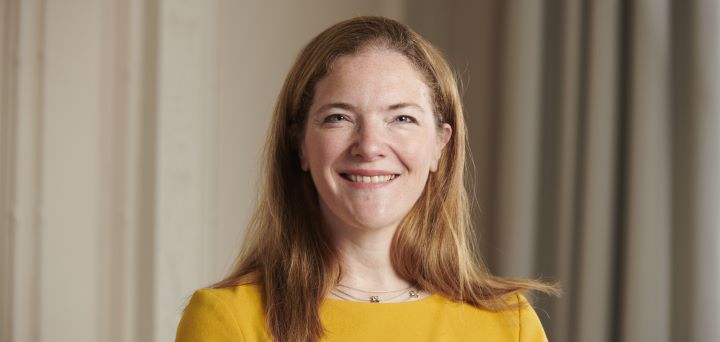The CEO at Border to Coast Pensions Partnership has said that collaboration and engagement with policymakers, regulators and companies across the industry is key in achieving “real-world reductions in emissions” and impact.
Rachel Elwell told Room151 that achieving net zero was not just about companies aligning their investment portfolios to the goal, but using their power to initiate change.
Border to Coast is one of the eight Local Government Pension Scheme pools in the UK and has pledged to achieve net-zero emissions by 2050 or sooner.
She said: “The really important thing here is that what needs to be achieved is real-world reductions in emissions.
“[It is] being able to get across the difference between making a portfolio net zero, and actually using the power of our collective voice, expertise and place in the industry to try to influence people such as organisations, regulators and policymakers to do the things that we need to have a real-world effect.”
Elwell stressed that collaboration throughout the industry was essential to create an impact on climate change. She highlighted the partnerships that have already been established between asset owners and managers, such as Climate Action 100+ and the Transition Pathway Initiative.
“But, because it’s such a cross-society problem, it’s not something that in isolation any one individual or party can do anything about. We’ve really got to work collaboratively to come together with this one,” she added.
Thinking about those risk factors in our investment decision making is an absolutely vital part of getting to net zero, whether that is managing the risks for some of our portfolio or it’s identifying opportunities that can have an impact.
Engagement advocacy
Border to Coast published its Net Zero Implementation Plan on 5 October. It outlined that the pensions pool has reduced the carbon emissions of its portfolios by 50% on 2019 levels and aims for a reduction of 66% by 2030.
Elwell outlined that engagement between investors and companies on environmental, social and governance (ESG) factors is an important aspect of Border to Coast’s strategy to achieve its net-zero targets. The pension pool has already actively engaged with 73% of its “top emitters” and aims to engage with 100% by 2030.
She said: “I think it’s really important that shareholders are saying, ‘we need you to address this [net zero] and we’re going to hold you to account in how you’re addressing it’.”
Responsible investment focus
Border to Coast’s roadmap to net-zero also heavily focuses on responsible investment, assessing whether investment decisions have got a “longer-term horizon” and analysing their climate risks.
Elwell noted that this “long-term investment horizon” is “fundamental” for Border to Coast. “An asset owner needs to be thinking about ESG as risk factors that might be material in their investment decision making.
“And thinking about those risk factors in our investment decision making is an absolutely vital part of getting to net zero, whether that is managing the risks for some of our portfolio or it’s identifying opportunities that can have an impact.”
An example of this is Border to Coast’s Climate Opportunities portfolio, which targets investments involved in the transition to a low-carbon economy and has £1.35bn of commitments from partner funds. These opportunities include investments in solar and wind farms, carbon capture and hydrogen fuel.
Going forward, I think we’ll start to see challenging of some of the big technology providers, because actually the users of their products have got quite a heavy carbon footprint.
Net zero challenges
The roadmap also outlined that Border to Coast has set emission reduction targets for 60% of its overall assets under management. However, the fund is yet to set net-zero targets for private markets assets, sovereign bonds and multi-asset credit investments, which make up the remaining 40%.
Elwell said this was partly due to the absence of sufficient data available specifically on sovereign debt and Scope 3 emissions (indirect emissions that occur in the value chain of the reporting company).
“There’s a huge amount of work to be done across companies to be able to do things like telling us what their Scope 3 emissions are as Scopes 1 and 2 are quite well understood,“ she said.
The data available from Scopes 1 and 2 is mainly focused on traditional oil, gas, steel and shipping. However, Elwell said that when Scope 3 data becomes available there may be a “shift” in who asset owners and managers choose to engage with.
“Going forward, I think we’ll start to see challenging of some of the big technology providers, because actually the users of their products have got quite a heavy carbon footprint,” she continued.
—————
FREE weekly newsletters
Subscribe to Room151 Newsletters
Room151 LinkedIn Community
Join here
Monthly Online Treasury Briefing
Sign up here with a .gov.uk email address
Room151 Webinars
Visit the Room151 channel














